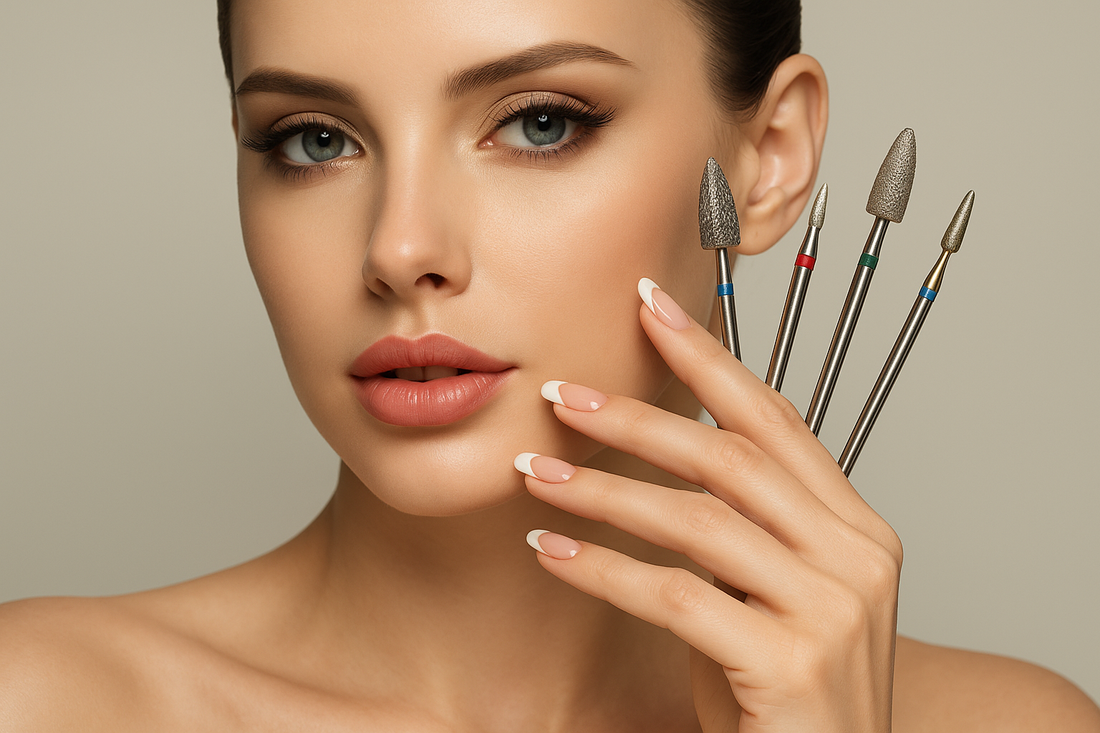
How to choose the right nail drill bit: a complete guide
Share
Choosing the right bit for your electric file is essential for ensuring the quality of a manicure or pedicure. The technical characteristics of the bit directly influence the effectiveness of the treatment, the client's comfort, and the speed of execution.
Why is the choice of strawberry so important?
Each nail drill bit has a specific use depending on its shape, abrasiveness level, and the material it's made of. Before choosing a bit, it's crucial to identify the type of service being performed (manicure or pedicure), the client's skin type, and the condition of their nails. Some drill bits are multipurpose, while others are designed for a single function. Experienced professionals can sometimes perform a complete treatment with a single bit, depending on the situation.
The main criteria to consider
To choose wisely, several parameters must be evaluated:
- The shape of the cutter head
- The color code corresponding to the level of abrasiveness
- The material from which the cutter is made
Let's take a closer look at each of these elements.
🔷 The different shapes of strawberries
Each tip shape allows targeted work on a specific area:
- Sphere (or ball) : Ideal for removing cuticles, smoothing the side contours of the nail and removing small dead skin. Available in several diameters depending on the desired precision.
- Cylinder : Perfect for trimming nails or removing old nail polish. Some models are rounded on the top to prevent injury.
- Needle : Very fine, this burr allows access to difficult areas such as lateral grooves or very high walls. It is also used to correct gel nails or open cracks in pedicures.
- Flame : One of the most versatile. Used to remove dead skin, treat corns, or smooth the nail plate.
- Cone : Very useful for working the cuticle gently, thanks to its tapered shape which facilitates precision.
🟡 Understanding abrasiveness colors
The cutters are marked with a colored ring that indicates their level of abrasion, essential for adapting the tip to the sensitivity of the skin and the thickness of the nail:
- 🟨 Yellow (extra fine) : For very sensitive skin or delicate natural nails. Gentle and precise work.
- 🟥 Red (fine) : Suitable for cuticles and sensitive areas like furrows. Versatile for manicures.
- 🟦 Blue (medium) : Mainly used to exfoliate the skin during a pedicure.
- 🟩 Green (coarse grain) : To remove old layers of gel or treat large calluses.
⚙️ Materials: a key point for sustainability
- 💎 Diamond Burrs : Coated with diamond particles, they are ideal for working on both nails and skin. They are available in different levels of roughness.
- 🔩 Tungsten Carbide Burrs : Ultra-resistant, they are designed to efficiently remove gels and acrylics. They cut the material into small chips instead of grinding it, making them particularly efficient.
✅ In summary
Choosing a nail file cutter is no accident. It depends on the work to be done, the area to be treated, and the desired result. By combining the right shape, abrasiveness, and material, you can ensure fast, precise, and painless treatment while optimizing the longevity of your tools.
